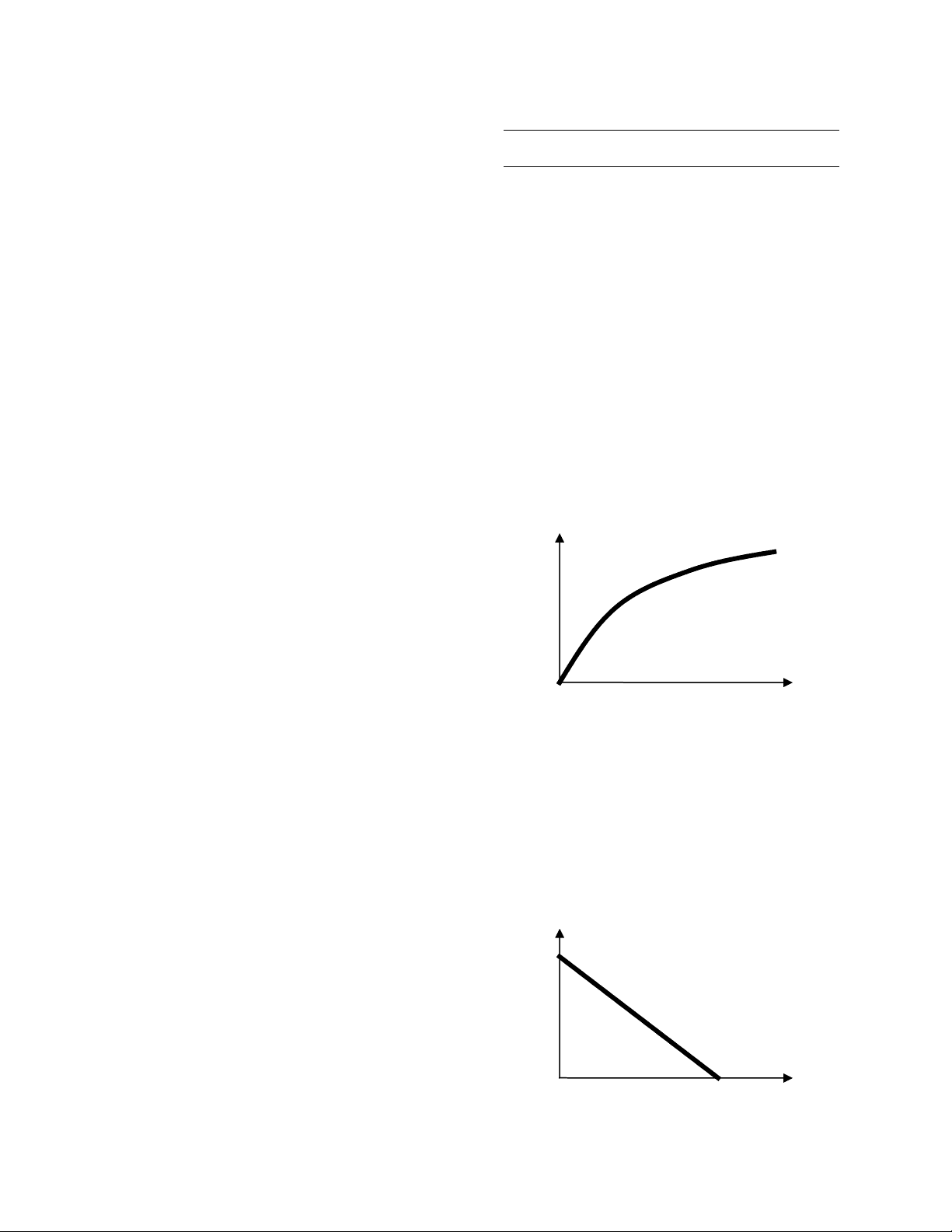
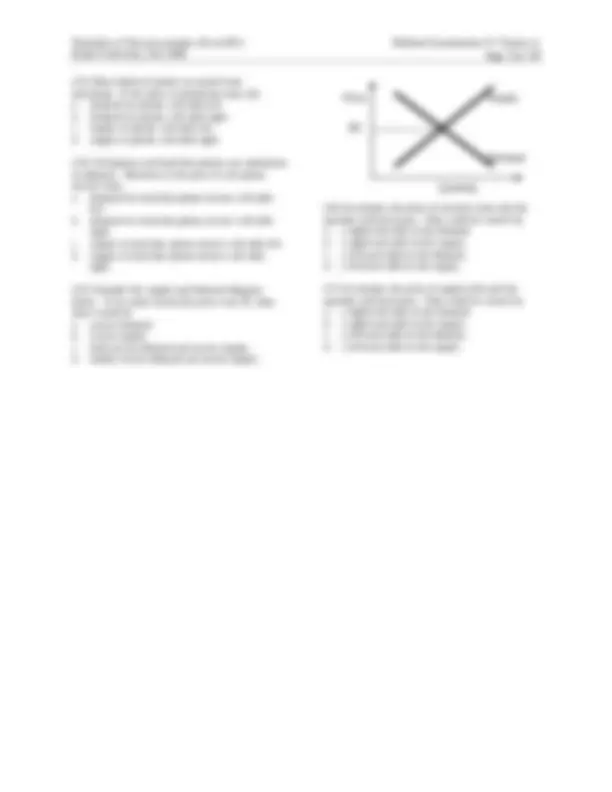
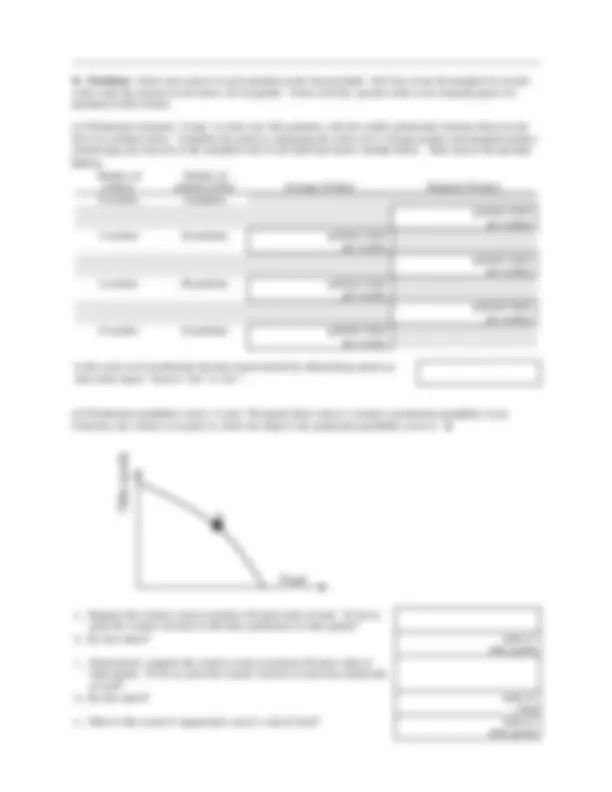


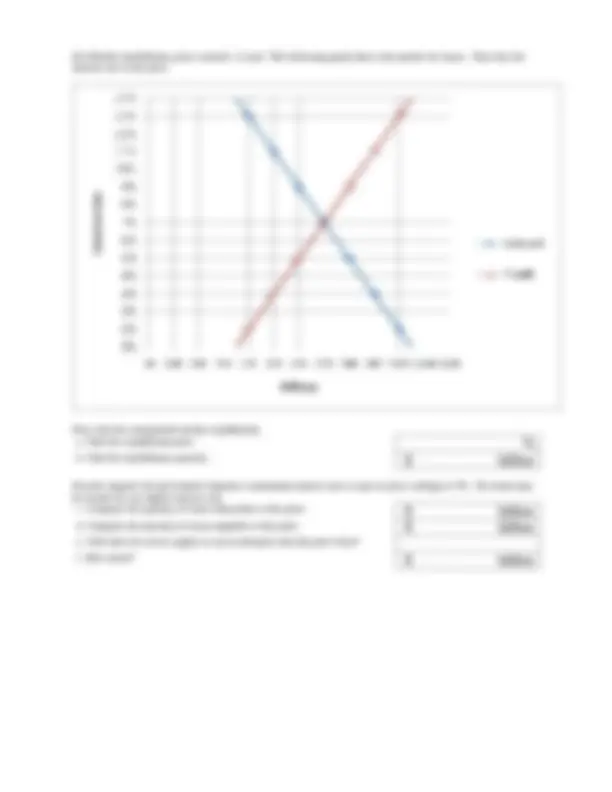
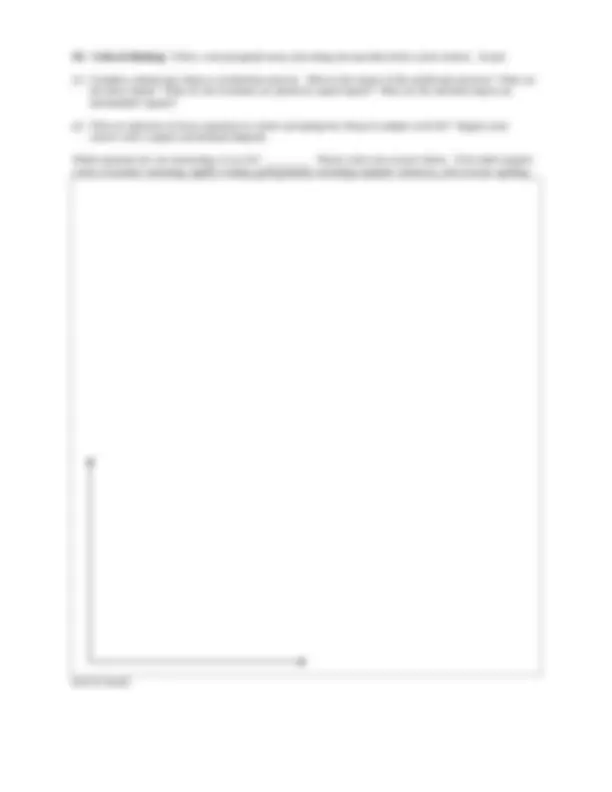


Study with the several resources on Docsity

Earn points by helping other students or get them with a premium plan


Prepare for your exams
Study with the several resources on Docsity

Earn points to download
Earn points by helping other students or get them with a premium plan
Community
Ask the community for help and clear up your study doubts
Discover the best universities in your country according to Docsity users
Free resources
Download our free guides on studying techniques, anxiety management strategies, and thesis advice from Docsity tutors
Material Type: Exam; Professor: Boal; Class: PRINCIPLES OF MACROECONOMICS; Subject: Economics; University: Drake University; Term: Fall 2008;
Typology: Exams
1 / 10

This page cannot be seen from the preview
Don't miss anything!







Principles of Macroeconomics (Econ 001) Signature: Drake University, Fall 2008 William M. Boal Printed name:
INSTRUCTIONS: This exam is closed-book, closed-notes. Simple calculators are permitted, but graphing calculators or calculators with alphabetical keyboards are NOT permitted. Numerical answers, if rounded, must be correct to at least 3 significant digits. Point values for each question are noted in brackets. Maximum total points are 100. I. Multiple choice: Circle the one best answer to each question. [1 pt each, 17 pts total] (1) The assumption in economics that people are rational means that people a. ignore "soft" concerns like friendships and charity. b. do the best one can with what they have. c. make sacrifices today for a better future. d. maximize their income. e. use math to make decisions. (2) “The interest rate has a major effect on employment and output in the short run” is an example of a. a positive statement. b. a normative statement. c. both of the above. d. none of the above. (3) “The Federal Reserve should raise the interest rate” is an example of a. a positive statement. b. a normative statement. c. both of the above. d. none of the above. (4) "Economic capital" or "physical capital" includes a. corporate and government bonds. b. shares of stock in private corporations. c. savings in bank accounts. d. machinery and trucks. e. all of the above. (5) Consider the production function shown below. As more labor is used, the marginal product of labor a. decreases. b. increases. c. first increases, then decreases. d. remains constant. (6) Consider the production possibility curve shown below. As more of either good is produced, the opportunity cost of that good a. decreases. b. increases. c. first increases, then decreases. d. remains constant.
Principles of Macroeconomics (Econ 001) Drake University, Fall 2008 Midterm Examination #1 Version A
(7) Factory A can produce 400 light trucks per day or 200 cars per day. Factory B can produce 200 light trucks per day or 50 cars per day. Who has a comparative advantage in producing light trucks? a. Factory A. b. Factory B. c. Both factories. d. Neither factory. (8) Kansas and Missouri both can produce corn and wheat. If Kansas has a comparative advantage in wheat, a. Missouri may also have a comparative advantage in wheat because the states are nearby. b. Kansas may also have a comparative advantage in corn because its farmland is so productive. c. Both of the above are possible. d. None of the above are possible. (9) Bartering is less common than monetary exchange for transactions because a. everyone is self-sufficient. b. transactions involving bartering are subject to higher taxes. c. bartering requires each party to have what the other wants. d. situations of comparative advantage are rare in the real world. (10) The Law of One Price means a. a good cannot be resold. b. all sellers are required by law to quote the same price. c. the buyer and the seller in each transaction must agree on a price. d. efficient markets eliminate price dispersion. e. the total quantity buyers want to buy is negatively related to the price. (11) A fall in the price of a good a. causes the demand curve to rotate clockwise until it becomes upward-sloping. b. causes a movement along the demand curve. c. shifts the demand curve to the left. d. shifts the demand curve to the right. (12) A recession reduces people's incomes and causes them to buy fewer cars because cars are, in economic terms, a. an inferior good. b. a complementary good. c. a substitute good. d. a normal good.
II. Problems: Insert your answer to each question in the box provided. Feel free to use the margins for scratch workonly the answers in the boxes will be graded. Work carefullypartial credit is not normally given for questions in this section. (1) [Production functions: 14 pts] A work crew fills potholes, with the weekly production function shown in the first two columns below. Complete the table by computing the work crew's average product and marginal product and placing your answers in the unshaded cells of the third and fourth columns below. Then answer the question
Number of workers Number of potholes filled Average Product Marginal Product 0 workers 0 potholes potholes filled per worker 3 workers 30 potholes potholes filled per worker potholes filled per worker 6 workers 48 potholes potholes filled per worker potholes filled per worker 9 workers 54 potholes potholes filled per worker Is the work crew's production function characterized by diminishing returns to their labor input? Answer “yes” or “no.” (2) [Production possibility curves: 12 pts] The graph below shows a country’s production possibility curve. Currently, the country is at point A, where the slope of the production possibility curve is -4. a. Suppose this country wants to produce 60 more units of food. To do so, must the country increase or decrease production of other goods? b. By how much? units of other goods c. Alternatively, suppose this country wants to produce 60 more units of other goods. To do so, must the country increase or decrease production of food? d. By how much? units of food e. What is this country’s opportunity cost of a unit of food? units of other goods
f. What is this country’s opportunity cost of a unit of other goods? units of food
(4) [Market equilibrium: 12 pts] Suppose six buyers and six sellers engage in a market similar to the activity we did in class. Each buyer may buy at most one unit and each seller may sell at most one unit, but no one is forced to trade. Assume that buyers and sellers are each trying to maximize their personal earnings (or “gains from trade”). Earnings for each buyer equal the buyer's value of the good minus the price paid. Earnings for each seller equal the price received minus the seller's cost of the good. Earnings of persons who do not trade are zero. Buyers’ values and sellers’ costs are given in the following table. Buyer Value Seller Cost Bob $14 Sue $ 1 Barb $13 Steve $ 2 Ben $13 Sam $ 3 Bailey $12 Sven $ 4 Brian $12 Sarina $ 5 Betty $10 Sean $ Prices must be whole dollars. Suppose with some experience, the market settles on a single price. All trades are made at that price. (You can use the graph at right for scratch work.) a. If the price were $7, would there by excess demand, excess supply, or neither?
d. Compute the total revenue received by sellers (which equals the total spending by buyers).
e. Compute the combined total earnings (or gains from trade) of all buyers and sellers. (Check your answer carefully! No partial credit for being "close"!)
f. Who enjoys higher earnings in this particular market, the buyers or the sellers? Or are buyers’ total earnings equal to sellers’ total earnings?
Demand: shifts left , shifts right , or no change? Supply: shifts left , shifts right , or no change?
increases, decreases , or cannot be determined?
increases, decreases , or cannot be determined? a. Sodapop: The price of corn syrup, an ingredient in sodapop, rises. $ $ $ $ $ $ $ $ $ $ $ $ $ $ $ $ 0 1 2 3 4 5 6 7 8 Quantity Price
b. Apple juice: The price of orange juice rises. c. Airline tickets: The price of jet fuel rises. At the same time, a recession lowers consumers' incomes.
III. Critical thinking: Write a one-paragraph essay answering one question below (your choice). [4 pts] (1) Consider a photocopy shop as a production process. What is the output of this production process? What are the labor inputs? What are the economic (or physical) capital inputs? What are the materials inputs (or intermediate inputs)? (2) Why are tomatoes in Iowa expensive in winter and spring but cheap in summer and fall? Support your answer with a supply-and-demand diagram. Which question are you answering, (1) or (2)? _________. Please write your answer below. Full credit requires correct economic reasoning, legible writing, good grammar including complete sentences, and accurate spelling. [end of exam]